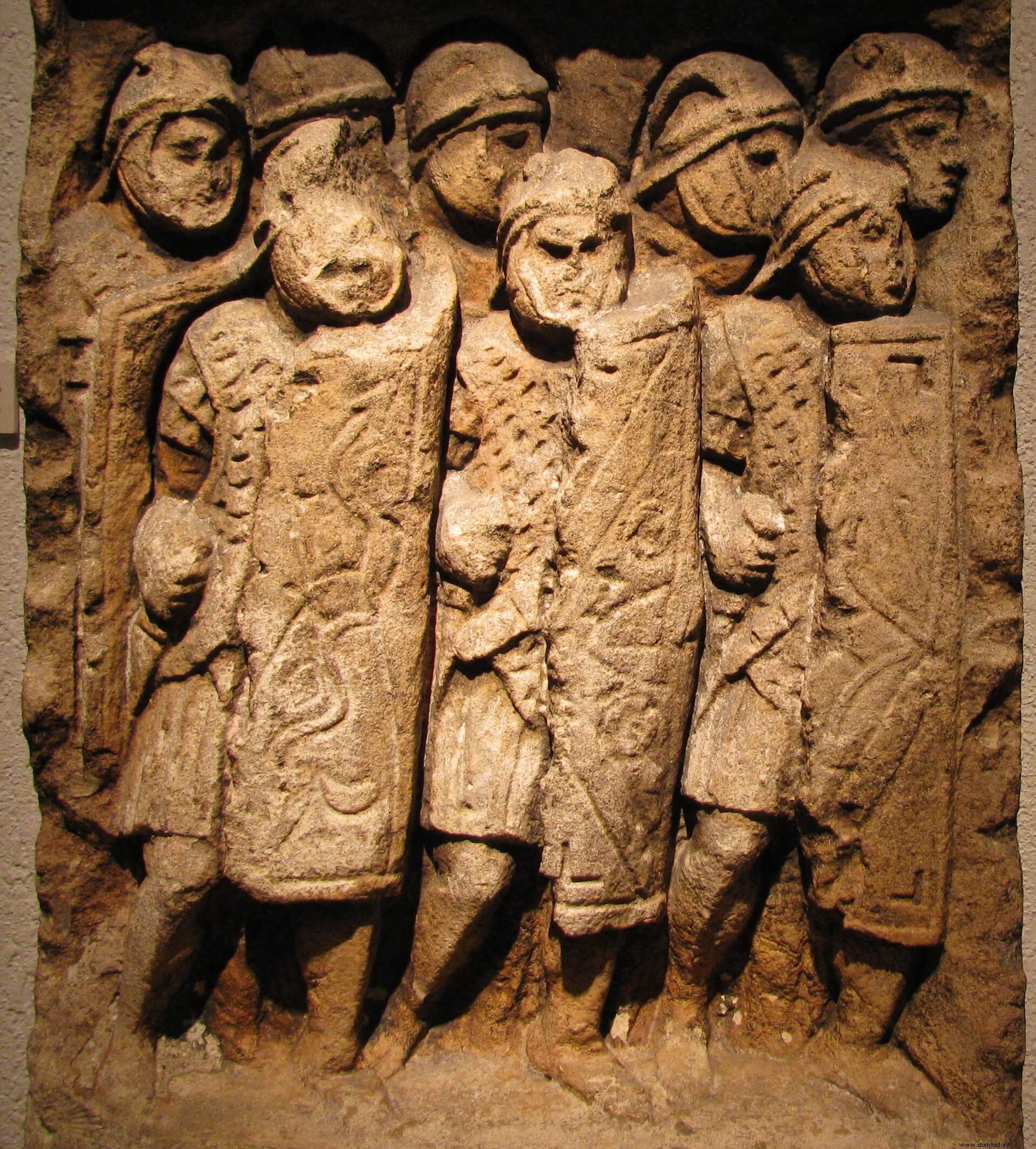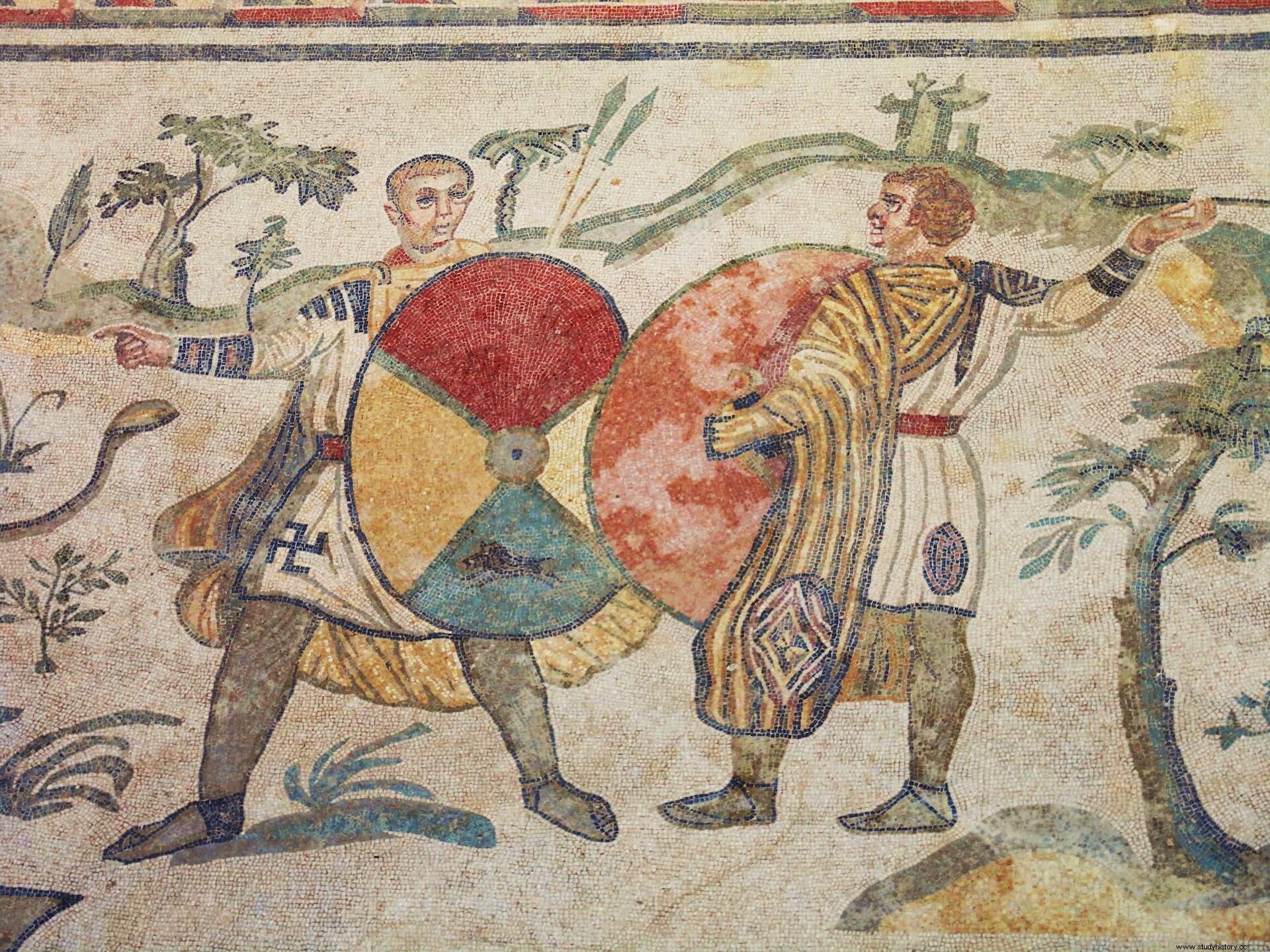In parallel and for obvious reasons, the evolution of society always translated into an evolution of the Roman army. Even, on occasions, it was the mutations within the army that stimulated changes in society. Lastly, the majority are those cases in which it is difficult to determine which is the chicken and which is the egg, but, be that as it may, all of this leads us to an inevitable conclusion, such as that the study of the Roman military machinery cannot withdraw from the study of Rome as a whole.
For the same reason, when we speak of the Roman army we are immediately forced to specify the era to which we refer, since, despite the traditionalism displayed by the Roman military, little has to do a legion of the Middle Republic with another of the Low Empire. The analysis of each period requires a specific analysis and, consequently, in Desperta Ferro we have addressed the periods separately, with a specific publication for each one.
Little is known about the Roman legion in times of the monarchy or very early republic , but we intuited that it must have been reduced to armed gangs that owed allegiance to a specific aristocrat or patrician family, rather than to the institutions of the State. We know an anecdote that refers how at the beginning of the V century a. C. a specific family, the gens of the Fabii, entered into war with the Etruscans by his own decision and behind the back of the Roman Senate, which gives a good account of the weakness of the institutions of Rome at that time and the existence of "private" armies (or, more properly, clientelist ) at the service of aristocratic families. As the State strengthened its institutions, this type of behavior became a thing of the past and that is when a very common army model was developed in the Mediterranean, that of the citizen militia, characteristic of city-states.

According to this model, possession of Roman citizenship it entailed the obligation of military service, although this was usually reduced to short periods (particularly during the summer) or specific emergencies. The underlying idea was to conceive a close link between participation in the war and the possession of political rights, such as the vote in the various popular assemblies (comitia ). Therefore, they were not professional soldiers but the civic body as a whole (male and of a working age, yes) that formed these armies. Peasants, merchants, shepherds, fought side by side and thus reinforced the feeling of political unity. Each of these citizen-soldiers had to provide himself with his own weapons and, except in a few cases, received nothing in return except a proportional share in the distribution of the spoils of war. The success of Roman weapons multiplied this booty which, in the long run, made war an enormously lucrative business, to the point that, as some specialists have pointed out, the Roman economy revolved fundamentally around war and Your profits. This is a true predatory economy. And it is precisely this rapacity that fuels the great expansion of Rome during the fourth to second centuries BC. C.
The multiplication of war fronts and their extension over time made it impossible for citizen-soldiers to return home at the end of the military campaign, nor could they, therefore, reconcile military activity with his work in the civil sphere. Consequently, from the end of the 2nd century BC. C. onwards, and progressively, the citizen soldier began to be replaced by the professional soldier, paid, dedicated entirely to war and, probably, more efficient than the former.
Now, as a consequence of this change, these professional soldiers abandoned their allegiance to the traditional institutions of Rome, magistrates or Senate, and instead displaced it to their own generals, aristocrats with such memorable names as Pompey the Great, Julius Caesar, Mark Antony who consequently became little more than fully autonomous “warlords”, endowed with quasi-private armies that obeyed their orders and not those of the Senate. All this contributes, as expected, to one of the worst moments in the history of Rome:the terrible, bloody and disastrous wars at the end of the Republic (1st century BC) that were about to cause the total fracture of Rome and its disintegration into multiple states.

The establishment of peace under Augustus it inaugurates a new era for Rome and, likewise, for its army which, as in the last days of the Republic, retains its loyalty to its general and not to the institutions of Rome. The only difference from that period is that now a single general survives, entitled imperator . In parallel, Augustus and his successors stabilized the borders of the Empire and directed the military machinery towards an essentially defensive and police role. Except for specific cases such as the conquest of Dacia and some fight for the throne, the Roman army of the I and II centuries AD. C. is limited to defensive operations. However, in the third century AD. C., the precarious political balance of Rome breaks completely and the generals launch themselves into an impudent competition for power, for the Crown, which will tear apart –in all senses– the Empire (up to three separate entities at the time of Aurelian). The army then becomes part of the problem and not part of the solution.
In the transition from the third to the fourth century AD. C., Diocletian and his successors establish a new model of Empire that manages to subject the Roman army, at that time of colossal proportions, to the authority of the State. However, military life in the army of the Lower Empire progressively lost prestige, the recruit became more difficult and became – like the rest of the professions – hereditary and forced, with which it became enormously unpopular; later we will even see the appearance of conscientious objectors because of their (Christian) creed. As we can suppose, the quality and combative will of these troops would be very scarce. In addition, Rome then had new and worthy adversaries:the Sassanid Empire, which from the third century AD. C. and throughout the fourth century AD. C. harasses the eastern borders, and the Germanic peoples, who, spurred on by the Huns, overflow the borders and cause one of the greatest military humiliations in the history of Rome (378 AD).

Since that failure, the army model A Roman army based on heavy infantry was discredited and the emperors began to resort to mounted contingents and, often, foreigners (barbarians), in whom they trust the security of the Empire. The best troops of the Western Roman Empire will be, in increasing progression, Germanic, and will be organized and armed in their own way, as well as led by generals of their own ethnic group. And since the time of Theodosius the Great (378-395 AD) we find generals of barbarian origin, the case of Stilicho, who de facto dominate imperial politics. Finally, and after a phase of “puppet” emperors at the service of German generals (the paradigmatic case of Ricimer), the latter decide to abandon the ambiguities and appearances of legality to take the reins of power. And so grimly ends the history of the Roman army and the Empire as a whole. It will be succeeded by the Germanic kingdoms (Visigothic, Frankish, Ostrogothic) in the West and by the Byzantine Empire in the East, but that is another story.
